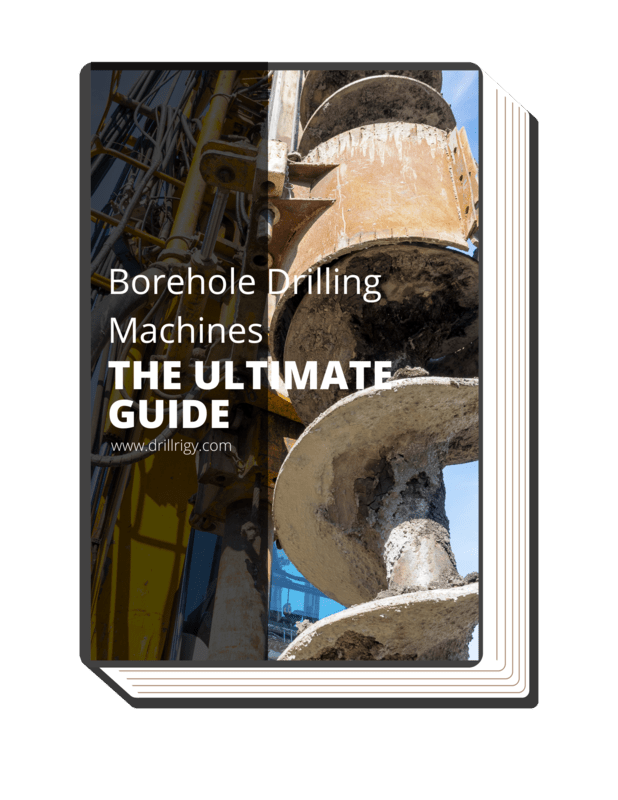Ever considered the possibility of the Earth’s core serving as your business’s power source? Could the solution to our energy needs be lying dormant beneath our feet? This leads us to the intriguing question, “What is Geothermal Drilling?”
Geothermal drilling is a method that exploits the Earth’s natural heat, buried within its crust, to generate electricity and provide heating and cooling systems. This article is set to shed light on geothermal drilling, its advantages, and how it could redefine your business’s energy strategy. We will explore the science behind it, the associated costs, and the potential return on investment.
So, if you’re a business owner looking for innovative and sustainable energy solutions, read on!
1. The Basics of Geothermal Drilling
Geothermal drilling involves the exploration and harnessing of heat energy from the earth’s crust to generate electricity. This process entails drilling wells into sub-surface areas where steam or hot water are present. Let’s have a deeper understanding with geothermal drilling’s basics:
What is Geothermal Energy?
Geothermal energy is the heat emanating from the earth’s subsurface. According to Baker Hughes, geothermal energy contained in the rocks and fluids beneath the earth’s crust, this energy can reach as far as the earth’s molten rock, magma. To generate power, wells are drilled into these underground reservoirs to extract steam and hot water, which can then drive turbines connected to electricity generators.
The Importance of Geothermal Drilling
Reported by IRENA that geothermal still accounts for a mere 0.5% of renewables-based installed capacity for electricity generation, and heating and cooling, globally. By creating access to geothermal energy, geothermal drilling supports the generation of electricity and heating in various industries and households. It’s essential to appreciate the fundamental role of geothermal drilling in this growth.
How does Geothermal Drilling Work?
The geothermal drilling process begins with a careful analysis of the earth’s subsurface composition. Drilling into the ground provides access to geothermal energy, and the extracted hot water or steam then drives turbines connected to electricity generators. This process brings to light the fine details of engineering expertise and geoscience knowledge that synergize in the world of geothermal drilling.
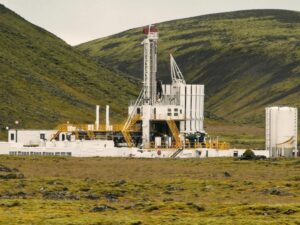
2. Benefits of Geothermal Drilling
Geothermal drilling unlocks a wealth of advantages, largely drawn from the nature of the energy it helps harness. Notably, these benefits extend in making geothermal energy an attractive prospect for sustainable power generation. Here are the following benefits:
Renewable
Geothermal energy remains abundant, providing a stable source of power regardless of the weather or time of day. This attribute makes geothermal drilling a strategic investment, especially in a world increasingly seeking independence from non-renewable resources like coal and oil. In my opinion, the reliability and sustainability of geothermal energy make it an invaluable asset in our pursuit of a greener future.
Cost-Effective
Geothermal energy proves extremely cost-effective compared to many forms of renewable energy. The up-front costs associated with the drilling and installation of geothermal systems can be offset by the savings in energy costs over time. Having been involved in various drilling projects, it’s rewarding to see the positive impact of geothermal drilling on the balance sheets of many businesses.
Environmentally Friendly
The extraction process produces significantly less carbon dioxide compared to a natural gas power plant and negligible amounts of sulfur-bearing gases or nitrous oxide. An example of this can be seen when comparing geothermal energy to coal. This feature underscores the environmental friendliness of geothermal drilling and its potential for contributing to global decarbonization efforts.
3. Types of Geothermal Drilling
Geothermal drilling is a process that involves penetrating the earth’s crust to harness heat energy stored beneath. This heat energy is then converted into electricity, providing a renewable and sustainable source of power. There are three main types of geothermal drilling, each with its unique characteristics and applications. Let’s delve into each of these types.
Dry Steam
Dry steam geothermal drilling is one of the oldest methods of harnessing geothermal energy. It involves tapping directly into underground reservoirs of steam and using this steam to drive turbines and generate electricity. Having seen this method in action, I can attest to its simplicity and effectiveness, which have stood the test of time.
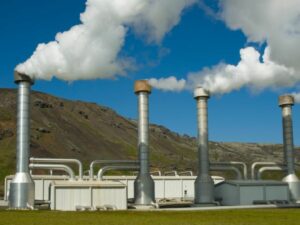
Binary Cycle
Binary cycle geothermal drilling allows for energy production even in lower temperature geothermal reservoirs. In this process, hot geothermal fluid is used to heat a secondary fluid with a lower boiling point. The vapor from this secondary fluid then drives the turbines. This method is particularly advantageous because it can utilize resources that would otherwise be considered too cool for energy production.
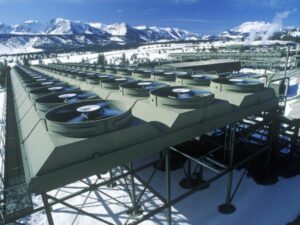
Flash Steam
Flash steam geothermal drilling involves pumping high-pressure hot water from geothermal reservoirs to the surface. When this water reaches the surface and pressure is reduced, it ‘flashes’ or quickly turns into steam. This steam is then used to drive turbines and generate electricity. The efficiency of this type can be significantly enhanced with the use of robust and reliable drill rigs, like the ones produced by Drillrigy.
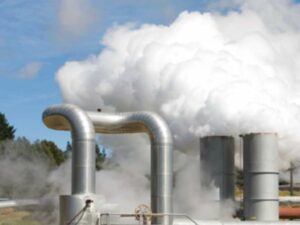
4. Key Components of a Geothermal Drilling Operation
A geothermal drilling operation is a complex process that requires several key components to function efficiently. These components work together to ensure that the drilling process is safe, efficient, and effective. Let’s take a closer look at these essential elements of a geothermal drilling operation.
Drill Rig
The drill rig is the heart of any geothermal drilling operation. It is a machine that houses all the necessary equipment for drilling, such as the drill bit and the drilling mud system. The drill rig also provides the power needed to drive the drill bit into the earth. It’s crucial to have a reliable and robust drill rig to ensure the success of the drilling operation.
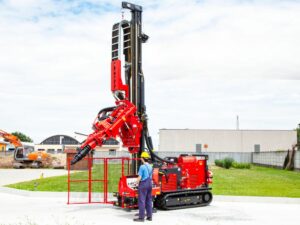
Drill Bits
Drill bits are the components that do the actual drilling. They are attached to the end of the drill string and are responsible for cutting through the earth’s crust. For example, roller cone bits are often used in geothermal drilling due to their durability and ability to drill through hard rock formations. Drill bits come in various types and sizes, each designed for specific drilling conditions.
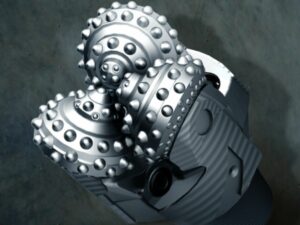
Drilling Mud
Drilling mud is a fluid that is circulated through the drill bit to cool it and carry away the cuttings. It also helps to stabilize the borehole and prevent it from collapsing. The composition of the drilling mud can be adjusted depending on the specific conditions of the drilling operation. In my experience, the right drilling mud can significantly improve the efficiency and safety of the drilling process.
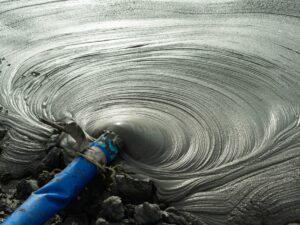
Casings
Casings are large pipes that are inserted into the borehole to prevent it from collapsing and to isolate different layers of the earth’s crust. They are typically made of steel and are cemented into place. To ensure the successful installation of these casings, the use of high-quality drill rigs, such as those manufactured by Drillrigy, is essential.
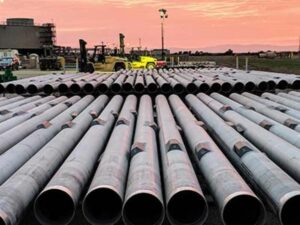
5. The Geothermal Drilling Process
Geothermal drilling is a multi-step process that requires careful planning and execution. It begins with exploration to identify potential geothermal resources, often using a geotechnical drilling rig for soil and rock sampling. Followed by the actual drilling process, and finally, completion and testing of the well. Let’s delve into the specifics of each of these steps.
Step#1 Exploration
Exploration is the first step in the geothermal drilling process. It involves identifying potential geothermal resources and assessing their viability for energy production. This step is crucial as it determines the success of the subsequent drilling operation.
- Geological survey: A geological survey involves studying rock formations, fault lines, and other geological features that could indicate the presence of geothermal resources.
- Geophysical testing: Geophysical testing involves using advanced technology to get a more detailed picture of the subsurface. Techniques such as seismic surveys, gravity measurements, and magnetic surveys are used to identify the location and depth of the geothermal reservoir. It’s fascinating to see how these technologies can reveal what’s hidden beneath the surface.
Step#2 Drilling
Once a potential geothermal resource has been identified, the drilling process begins. This involves penetrating the earth’s crust to reach the geothermal reservoir. The drilling process is complex and requires careful selection of drilling methods and rig.
- Drilling methods: Rotary drilling is the most common and involves using a rotating drill bit to cut through the rock. Hammer drilling uses a hammering action to break the rock, while diamond drilling uses a diamond-tipped drill bit for hard rock formations. Reverse circulation drilling, uses a dual-wall drill pipe to prevent contamination of the drilling fluid.
- Rig selection: The rig must be capable of reaching the required depth and handling the specific drilling conditions. Factors such as the depth of the geothermal reservoir, the type of rock to be drilled, and the expected temperature and pressure conditions are considered when selecting the rig.
Step#3 Completion and Testing
After the drilling process, the well is completed and tested. This involves preparing the well for production and assessing its performance. There are several activities involved in this step.
- Well casing: Well casing involves inserting a steel pipe into the borehole to maintain its integrity and prevent contamination of the geothermal resource. The casing is cemented into place to ensure a secure fit.
- Well stimulation: It is a process used to enhance the productivity of the geothermal well. It involves techniques such as hydraulic fracturing or acidizing to increase the permeability of the reservoir. This allows for more efficient flow of geothermal fluid to the surface.
- Well testing: It is conducted to assess the performance of the geothermal well. This involves measuring the flow rate, temperature, and pressure of the geothermal fluid. I can attest that testing well is a critical step in ensuring the viability and efficiency of the geothermal.
6. Applications of Geothermal Drilling
Geothermal drilling taps into the earth’s natural heat to provide a range of applications. These applications span various sectors, from power generation to agriculture, making geothermal drilling a versatile and valuable resource. Let’s explore some of these applications in more detail.
Power Generation
Geothermal power plants use the heat from the earth to generate steam, which then drives turbines to produce electricity. Countries like Iceland and the Philippines have harnessed geothermal energy to a great extent, contributing significantly to their energy mix. I personally find it remarkable how geothermal drilling can provide a stable and sustainable source of power.
Heating and Cooling
Geothermal heat pumps use the stable temperatures of the earth to provide heating in the winter and cooling in the summer. These systems are highly efficient and can significantly reduce energy consumption for heating and cooling. The efficiency of these systems is truly impressive, making them a smart choice for any business looking to optimize energy use.
Agriculture and Aquaculture
In agriculture and aquaculture, geothermal drilling is used to provide consistent and controlled heat. In agriculture, it can be used for soil heating and greenhouse heating, promoting plant growth in colder climates. In aquaculture, geothermal heat can be used to maintain optimal water temperatures for fish and other aquatic species.
7. Challenges in Geothermal Drilling
While geothermal drilling offers numerous benefits, it also comes with its set of challenges. These challenges range from technical difficulties to environmental concerns and high initial costs. Let’s delve into these challenges and their implications.
Technical Difficulties
Geothermal drilling involves drilling deep into the earth’s crust, often through hard rock formations. This can pose significant technical challenges. The high temperatures and pressures encountered at these depths can cause equipment failure and other operational difficulties. Overcoming these technical challenges requires advanced drilling technologies and expertise.
| Technical Difficulty |
Description |
| High Temperatures |
Dealing with extreme heat during drilling. |
| Hard Rock Formations |
Drilling through challenging rock layers. |
| Lost Circulation |
Loss of drilling fluid into formations. |
| Corrosive Environment |
Equipment corrosion in geothermal fluids. |
| Formation Instability |
Unstable formations leading to borehole collapse. |
| Scale and Mineral Deposits |
Accumulation of minerals affecting equipment. |
| High Pressure Zones |
Handling high-pressure geothermal reservoirs. |
| Formation Damage |
Negative impact on the geothermal reservoir. |
| Wellbore Stability |
Maintaining stability in various conditions. |
| Mud Management |
Proper handling and disposal of drilling mud. |
Environmental Concerns
While geothermal energy is a clean and renewable source of power, the drilling process can have environmental impacts. These include potential groundwater contamination and the release of greenhouse gases trapped deep within the earth. It’s essential to implement proper safeguards and mitigation measures to minimize these environmental impacts.
High Initial Cost
The exploration, drilling, and construction of geothermal power plants require substantial investment. However, once operational, geothermal plants can provide low-cost power over a long period, making it a worthwhile investment. From my perspective, it’s clear that the long-term benefits of geothermal drilling can outweigh the initial costs.
Conclusion
Geothermal drilling is a complex yet rewarding process that taps into the earth’s natural heat to provide a range of applications. From power generation to heating and cooling, and even agriculture, the versatility of geothermal drilling is truly remarkable. As an industry expert, I’ve seen the potential of geothermal drilling and its transformative impact on various sectors.
If this article has sparked an interest in harnessing geothermal energy for business operations, don’t hesitate to contact us. Our team of experts are here to provide more product details or answer any questions. Let’s explore the power of geothermal drilling together.








